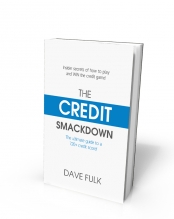Learn About Credit 101:Lesson 4 of 4
Credit “U” Home
Cost of Bad Credit
| Sally | Sara | |
|---|---|---|
| Interest Rate | 3.23% | 6.80% |
| Monthly Payment | $276 | $350 |
| Total Interest Paid (10 yrs) | $8,075 | $17,000 |
| Sara’s Penalty | $8,925 |
**After reforms passed in the 2010 Student Aid Fiscal Responsibility Act interest rates are capped at 6.8%. Unfortunately, for people who have already graduated from college, the reform came too late.
Credit cards: $90 more a month
In the past couple years, credit card issuers have stiffened their lending standards, resulting in higher rates and pickier standards. Some even require a 720-750 to even be approved, regardless of the interest rate offered. It has gotten to the point where simply getting a credit card can be next to impossible if your score is under 675, according to Curtis Arnold of Cardratings.com.
| Sally | Sara | |
|---|---|---|
| Interest Rate | 11.99% | 20.99% |
| Annual Interest Paid | $1,439 | $2,519 |
| Total Interest Paid (50 yrs) | $71,940 | $125,940 |
| Sara’s Penalty | $54,000 |
Auto loans: $6680 more per car
Each car that they purchase is valued at $25,000. The numbers below are based on a new car purchase of $25,000’s every five years. The difference in the interest rates seriously increases the interest cost per loan.
| Sally | Sara | |
|---|---|---|
| Interest Rate | 3.75% | 9.76% |
| Monthly Payment | $458 | $528 |
| Interest Cost per Loan | $2,480 | $6,680 |
| Total Interest Paid | $27,280 | $73,480 |
| Sara’s Penalty | $46,200 |
| Sally | Sara | |
|---|---|---|
| Interest Rate | 3.25% | 4.61% |
| Monthly Payment | $870 | $1,027 |
| Total Interest Paid (10 yrs) | $37,733 | $56,573 |
| Sara’s Penalty | $18,840 |
**Payments totaling $157 more a month for the same priced home
Home 2: 30 year fixed-rate loan for $300,000 over 30 years:
| Sally | Sara | |
|---|---|---|
| Interest Rate | 3.25% | 4.61% |
| Monthly Payment | $1,305 | $1,540 |
| Total Interest Paid | $169,800 | $254,400 |
| Sara’s Penalty | $84,600 |
**Payments totaling $235 more a month for the same priced home
Home Equity Loan: $118 a month difference
Similar to car loans, this type of lending is very sensitive to the credit score. Sara’s ends up with an interest rate that is over 4 points higher than Sally for a 15-year loan for $50,000:
| Sally | Sara | |
|---|---|---|
| Interest Rate | 6.17% | 10.81% |
| Monthly Payment | $442 | $560 |
| Interest cost per loan | $29,560 | $50,800 |
| Sara’s Penalty | $21,240 |
As a 30 year old with a mortgage, car payment, student loan, and credit card Sara is paying $420 more a month than Sally for the same amount borrowed. Over their lifetimes, Sara pays a shocking $233,805 more. The above estimates also don’t take into account the higher costs of insurance.
Most importantly, these costs can’t display the lifetime of struggling for money. More of Sara’s paycheck was given to lenders. She had less expendable income available between each paycheck possibly causing unnecessary financial stress.
If you ever wondered how some families always seem to be struggling while others in similar situations aren’t, the answer could and most likely is their credit.
Automobile Financing:
If you are financing a car and have bad credit you will be paying thousands of dollars more due to excessive interest rates charged by the lender. Had your credit been restored prior to purchasing the car, that extra money would be in YOUR pocket, not the lenders. The extra interest is calculated into the car payment leaving you with a dramatically higher payment, one you and your family can probably not afford. One of the first things that our members often do once their credit is repaired is to refinance their automobile for a “fraction” of their current payment, or, buy twice the car at nearly the same payment…
Example: $25,000 car loan paid over 5 years:
| Credit Status | Interest Rate | Monthly Payment | Extra Interest over 5 years |
|---|---|---|---|
| Excellent | 5% | $471 | $0 |
| Fair | 10% | $531 | $3,564 |
| Bad | 16% | $608 | $8170 |
Home Mortgage :
The “American Dream” of owning your home is out of reach for most people with credit problems. As you can see below, over time, even mildly damaged credit will cost a fortune in additional interest rates. This forces credit challenged consumers to raise their families in less desirable neighborhoods and pay off someone else’s mortgage! This leaves the credit challenged family holding year’s worth of rental receipts and nothing to show for it.
Example:$200,000 house mortgage paid over 30 years:
| Credit Status | Interest Rate | Monthly Payment | Extra Interest over 5 years |
|---|---|---|---|
| Excellent | 5% | $1,073 | $0 |
| Fair | 8% | $1,467 | $36,360 |
| Bad | 12% | $2,057 | $59,040 |


